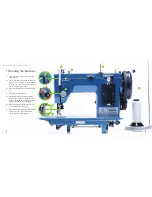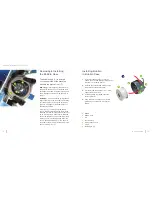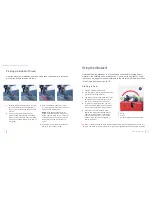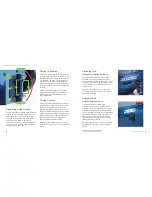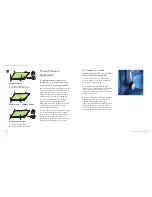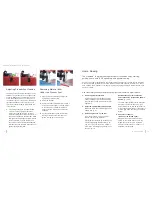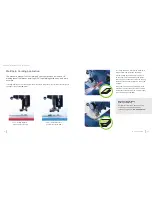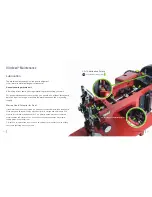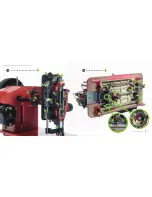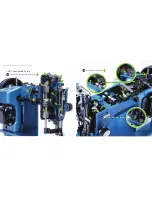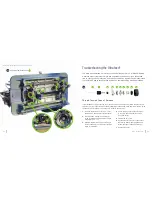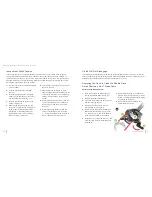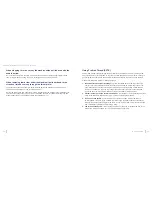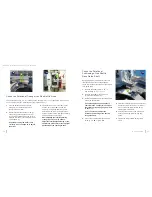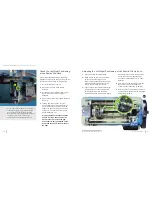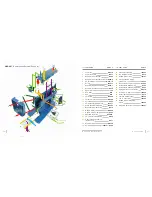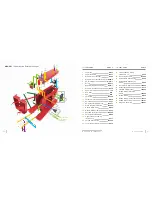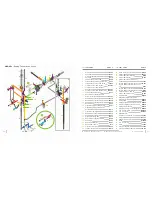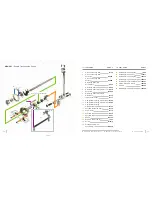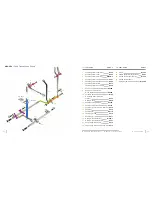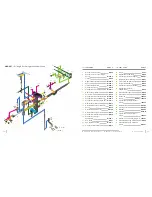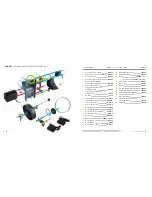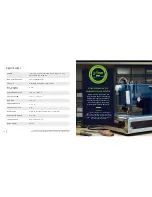
When stopping to turn a corner, the machine skips a stitch even with the
needle buried:
Bury only the needle tip in the cloth. This allows the machine to create the appropriately sized
loop for the gib hook to pickup. See p. 13 for helpful advice on turning corners.
When removing fabric from under the machine it pulls hard and three
strands of thread come up through the throat plate:
Typically this happens when fabric is being removed during the middle of a stitch. The hook
under the machine still has a loop of thread around it.
Before removing fabric from under the machine, manually turn the machine forward until the take-
up arm has just passed the top of its travel. This allows the hook to release the thread loop and
proper upper tension to be applied to finish the stitch (see p. 17).
Using Profilen Thread (PFTE)
Sewing with a lifetime (PFTE) thread can be difficult and frustrating at times. Try making a few
easy adjustments to your Ultrafeed
®
to improve the stitch quality when using Profilen. These are
general guidelines, feel free to experiment with these adjustments to fine tune your Ultrafeed
®
.
Stitches are skipped in straight or zigzag operation:
1. Mount the thread spool horizontally.
Every time the thread pulls off the top of the cone,
a twist is put in the thread. Eventually, these twists add up and an erratic loop forms at the
hook. When the hook misses catching the thread loop, the machine skips a stitch. Make a
roller out of a dowel rod or an old coat hanger that will support the spool horizontally and
mount the spool on it. Pulling the thread off this way will reduce twists and kinks.
2. Further reduce the chance of twists and kinks
in your thread by running it through all three
holes in the three hole thread guide (p. 50,
21
) when threading the machine.
3. Use a #14 or #16 needle.
PTFE thread is very slippery and often requires the use of a
smaller needle. If you are using a needle that is too large, the needle shaft cannot hold the
slippery thread firmly enough against the fabric to form a proper loop. This prevents the hook
from catching the thread loop and forming a stitch.
4. Lower the needle by 1/16".
Lowering the needle has a tendency to increase the size of the
thread loop. Adjust the needle only if a smaller needle does not help.
Ultrafeed
®
Guidebook: Troubleshooting the Ultrafeed®
36
35
www.sailrite.com

